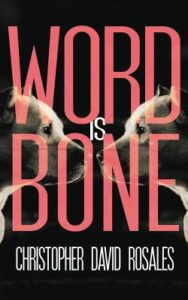Readers and writers alike come to crime fiction for different reasons, and critics usually break those many reasons down into two: a desire to control the monstrous or a desire to envision social change. But few of us fall simply into either category, and some of our interests in reading and writing about crime are private. Whatever personal compulsion brings me to the genre, I want crime fiction that walks the blurry line of circumstance. I want crime fiction that explores how any of us takes one step off a curb, realizing too late we don’t know the streets’ secrets. We suddenly need to, maybe need to and desire to, learn those secrets for ourselves.
But this oblique or sidewinding approach to crime doesn’t always scream “CRIME FICTION”. When I read crime fiction by the light of my neighborhood’s power-grid, I see how frequently marginalized writers have to create rendezvous-points of cultural negotiation by appropriating major commercial genres. Those cultural negotiations are like handshake deals between the writers like myself and the wider traditional crime readership.
The wider crime readership’s awareness of convention means that unconventional approaches to a mainstream genre allow two options for writers from historically marginalized communities:
- The writer can choose to push into older conventions, describing a mainstream territory for the marginalized community
And/Or
- The writer can challenge those conventions entirely, creating a genre that is the writer’s own, unable to depend entirely on reader recognition.
(Patricia Linton’s criticism is a great place to dig deeper.)
For the writer, the stakes are high. Satisfying conventions is how we keep our readers. For a writer challenging their place in the mainstream publishing world, most of our stakes reside in the moments that recognize conventions yet subvert them. For example, in order to challenge genre convention in my own novel, Word is Bone, I set it in my neighborhood in Los Angeles in the 1990s, and I deliberately accessed and referenced both the sweltering language of classic Southern Gothic writers and the L.A. Noir writers they influenced: from William Faulkner and Flannery O’Connor in the South, to Raymond Chandler and Faulkner-Redux in the noir-lit West; from Cormac McCarthy and Walter Mosley when they write firmly in genre, to Mike Davis when he writes cultural geography and trenchant criticism about L.A. in City of Quartz. The resultant “Southern California Gothic/Noir” became a concrete-cosmos in in which I could both honor and scam on convention. At the same time, my writing was an homage to Chicana/o/x-Latina/o/x writers before me, who dove head-first into the crime/mystery genres from which the following list comes.
The following list of 5 Uniquely Chicanx/Latinx Representations in Crime Fiction serve as excellent examples across a wide time-period. These works manage to strike a balance: both satisfying established genre conventions to describe a new territory, and/or challenging the genre’s traditional conventions until the genre becomes the writer’s own.
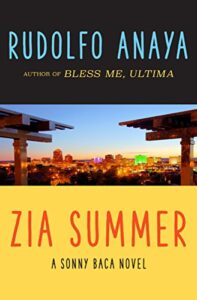
ZIA SUMMER, A Sonny Baca Mystery, by Rudolfo Anaya
A titan in Chinano/Latino Literature, Anaya is best known for his spiritual coming of age novel Bless Me, Ultima. In the first novel of his detective Sonny Baca series, he takes the private investigator and gives him a spiritual dimension, too, something much more integral to the Mestizaje culture of New Mexico than to, say, Sam Spade investigating The Maltese Falcon. Sonny Baca, instead of taking a job visited upon him at some sterile downtown office, believes his murdered cousin’s spirit calls to him for vengeance. While it’s important not to exoticize our own Chicano/Latino detective, it’s also important to note, and to celebrate as readers who enjoy it, that these detectives maintain deliberate sustained involvement with their own cultural traditions, values, social morays, and moralities.
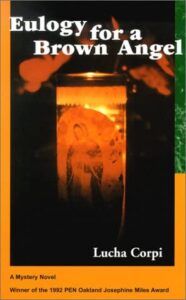
Eulogy for a Brown Angel : A Mystery Novel, by Lucha Corpi
Another seminal work of mystery/detective fiction is Lucha Corpi’s Eulogy for a Brown Angel. Corpi’s brand of crime writing reveals that what we often call crime “genre” writing could still be called “literary realism,” except—
Except it comes from barrios instead of bright-lights shining on The New Yorker’s target audience. In this novel, in the aftermath of a Chicano Civil Rights march broken up by L.A. police, a prominent reporter discovers the dead body of a child. Our heroine is a political activist named Gloria Damasco. Her investigation leads to the discovery of more deaths, and a fearful understanding of authority. For anyone like myself, who grew up hearing from Chicano activists the stories of wiretaps and arrests without probable cause, this detective novel reads less like fiction than—
Well. You get it.
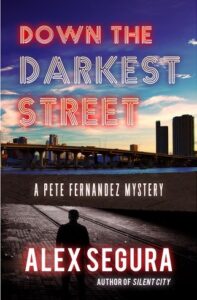
Down the Darkest Street, a Pete Hernandez mystery, by Alex Segura
Alex Segura, whose name seems to be catching fire as I type, honed his ever-expanding chops writing crime in his own take on the traditional noir style. His Pete Hernandez series is one of the best contemporary Latino mysteries I’ve read, and it’s largely thanks to Segura’s mastery of the genre’s sleek rendering of setting while character action moves at quick clips. And listen to this: “The evening had only brought a small respite—dimmed lights in a sauna. The rare, tropical breeze a teasing gift—a sweet whisper in your ear. Miami.” If that musicality doesn’t grip you, the novel offers a complex yet fast-paced plot with plenty of personal connection to keep your heart both pumping and aching. The damn thing doesn’t start like a kick in the face, it starts with one.
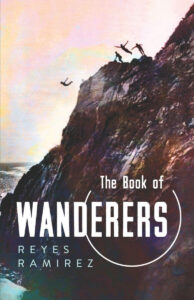
“Ni Sabes. Tomás de la Paz” by Reyes Ramirez. The Book of Wanderers.
When reading this story, I couldn’t help but wonder how naive we’ve been about who we call “criminals.” To think we know from crime? To think we know from violence? To think we know the depths, if our “vacation” is not court-ordered?
Tomás de la Paz, the “You” in this story, has “never done a day’s worth of real work in your fucking life [. . .]” (12). When Tomás finally gets a job, he meets a fellow Salvadoreño named Rodrigo. It turns out Rodrigo barely escaped the tragedies of a life so gruesome Tomás has his eyes shocked wide. Not in the way you’re thinking: not “in too deep,” not “perfect crime” gone wrong. The intimacy of the terror is what prompts Tomás to question what really counts as life’s hard work.
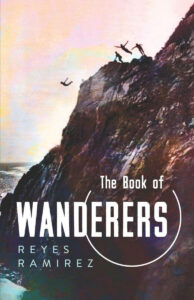
“Like Bitches, Like She-Devils” by Cristina Rivera Garza. New and Selected Stories.
Beginning with the first line, “The kidnapping took place one Sunday afternoon,” what proceeds is the best crime story I’ve read in a long, long time. And you won’t find it in a collection called Best Crime.
Xian, the main character kidnapped at the story’s start, is an unlikely heroine, a friend of a past victim, and not once does she bow out of this role—she resides in it. She displays an act of internal power I’ve not seen so deftly drawn across a story-climax’s wrist. She wins with stark, clear sight of her reality, awakened into her life (still the same life, but) one moment more.
***


